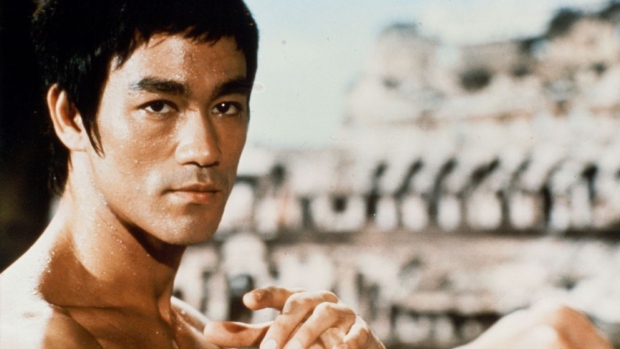Jun 7, 2020
Bruce Lee documentary ‘Be Water’ debuts Sunday on TSN
A cultural icon, mixed martial arts pioneer and revered action star, Bruce Lee never took the easy path and enriched the world through his talent and grace. Lee is the subject of director Bao Nguyen’s ESPN 30 for 30 film ‘Be Water,’ which debuts Sunday at 9pm et/6pm pt on TSN3, TSN4 and TSN5.

A cultural icon, mixed martial arts pioneer and revered action star, Bruce Lee never took the easy path and enriched the world through his talent and grace.
Lee is the subject of director Bao Nguyen’s ESPN 30 for 30 film ‘Be Water,’ which debuts Sunday at 9pm et/6pm pt on TSN3, TSN4 and TSN5.
What does it mean to Be Water?
Lee’s philosophy was rooted in the idea of being adaptable and non rigid in any situation. Liquid.
"Empty your mind. Be formless, shapeless -- like water. You put water into a cup, it becomes the cup. You put water into a bottle, it becomes the bottle. You put it in a teapot, it becomes the teapot. Water can flow or it can crash. Be water, my friend.” - Bruce Lee
Born in San Francisco while his parents were on tour, Lee grew up in Hong Kong.
As a youth, Lee studied the art of Wing Chun and eventually his parents sent him back to the United States to live with his sister.
He would settle in Seattle and complete high school before enrolling at the University of Washington.
While at the Pacific Northwest school, Lee began teaching his own version of Wing Chun called Jun Fan Gung Fu, to anyone that was interested in learning the martial arts discipline.
Lee began his breakthrough at the 1964 Long Beach International Karate Championships, where he demonstrated both his one-inch punch and two-finger pushups.
Gaining traction, Lee was invited to audition for roles in Hollywood by television producer William Dozier which would eventually led to him being cast in the role of Kato in the ABC TV series The Green Hornet.
The Green Hornet starred Van Williams as Britt Reid/Green Hornet, a masked hero and Lee as his sidekick Kato. Lee would also appear on the Batman TV series as the same character in three episode.
The show would only last for one season and, after it was finished, Lee would continue teaching martial arts.
He would go on to call his style, Jeet Kune Do (Way of the Intercepting Fist), which according to BruceLee.com has the guiding principles of simplicity, directness and freedom (the form of no form).
Though Lee would find other acting roles, he would grow frustrated with never being cast as the lead and eventually headed back to Hong Kong in search of bigger roles.
Not only would he find those roles, he would also achieve box office success with films such as The Big Boss, Fist of Fury and the Lee-directed Way of the Dragon.
It was during the filming of his next film Game of Death, which included a fight scene with NBA star Kareem Abdul-Jabbar, that Lee received his biggest break.
Warner Brothers wanted to cast Lee in Enter The Dragon, a film that would go on to become one of the highest-grossing films of 1973 and one of the most influential touchstones in mixed martial arts.
Tragically, Lee died of cerebral edema six days before the movie was released.
The legacy of both the man and the film led to Nguyen’s interest in making the documentary, something he felt the first time he saw Lee on the screen.
"I was just blown away," Nguyen told ESPN. "I'd never seen a lead actor who looked like me. I couldn't get over the fact that he was the film's hero. He wasn't the villain. He wasn't a sidekick. He was a confident leading man. Growing up in America, I was not used to seeing this type of depiction of Asian males."
Nguyen believes that if people see more of the real person in Lee, they will better relate to the amazing things he accomplished in his life.
"He's become more than just a man. He's become an icon that anyone can project their story on," Nguyen told ESPN. "But in order for heroes to become relatable, for people to really want to be like them, you have to know their human side. Their struggles. Their fears. You need to be able to say, 'He had the same insecurities that I have, but he believed in himself and fought his way through it.' I find that to be the most aspirational part of Bruce Lee."
